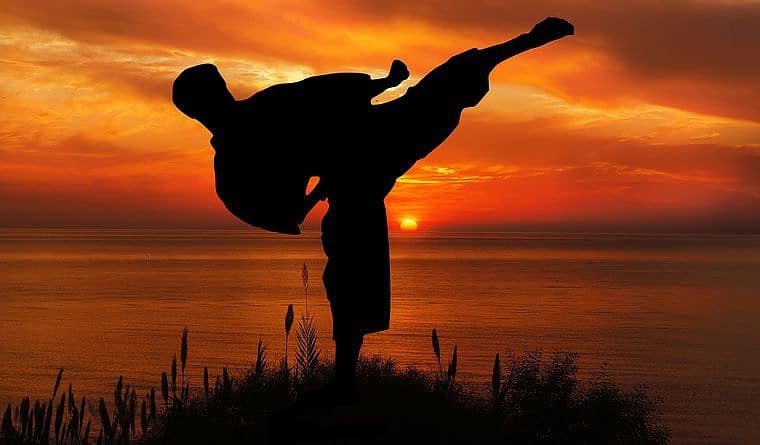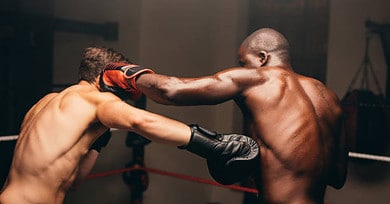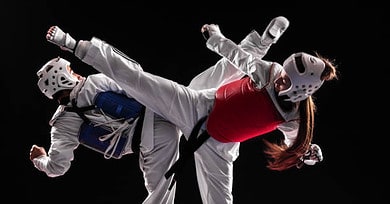What can we learn from the principles and techniques of Karate?
Table of Contents
“Karate: Unleash Your Inner Warrior!”
Introduction
Karate is a martial art that originated in Okinawa, Japan in the early 20th century. It is a striking-based form of martial arts that emphasizes powerful punches, kicks, and knee and elbow strikes, as well as open-hand techniques like knife-hands and palm-heel strikes. Karate practitioners aim to develop physical strength, flexibility, balance, and coordination, as well as mental focus, discipline, and character development. Karate has many different styles and organizations, each with its own set of techniques, training methods, and philosophies.
What is Karate?
Karate is a term used to describe a wide range of martial arts that originated in Japan. There are many different styles of karate, each with its own unique techniques, principles, and training methods. Some of the most popular styles of karate include:
Shotokan Karate: This is one of the most widely practiced styles of karate, and it was developed by Gichin Funakoshi in the early 20th century. Shotokan Karate is characterized by its strong stances, powerful strikes, and emphasis on kata (forms).
Goju-Ryu Karate: This style of karate was founded by Chojun Miyagi in the early 20th century. Goju-Ryu Karate emphasizes close-range fighting, joint locks, and grappling techniques.
Shito-Ryu Karate: This style of karate was developed by Kenwa Mabuni in the early 20th century. Shito-Ryu Karate combines the hard and soft techniques of other karate styles, and it emphasizes kata and sparring.
Wado-Ryu Karate: This style of karate was founded by Hironori Ohtsuka in the mid-20th century. Wado-Ryu Karate emphasizes evasive footwork, throws, and joint locks, and it places a strong emphasis on relaxation and fluidity of movement.
Kyokushin Karate: This style of karate was founded by Masutatsu Oyama in the mid-20th century. Kyokushin Karate is known for its full-contact sparring and emphasis on physical conditioning.
These are just a few examples of the many styles of karate that exist. Each style has its own unique techniques, principles, and training methods, but all karate styles share a common history and philosophy.
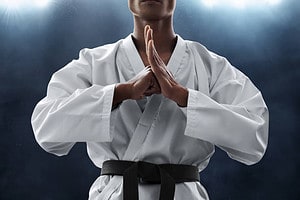
The philosophy of Karate
The philosophy of karate is based on a code of ethics and values that go beyond just physical techniques. It encompasses the principles of character development, mental and emotional strength, and self-discipline. The philosophy is centered around the pursuit of perfection and the belief that one can improve oneself through hard work and dedication.
Karate emphasizes respect for oneself, others, and the world around us. The philosophy teaches that the ultimate goal is not to defeat others, but to conquer one’s own weaknesses and limitations. Karate training helps individuals to cultivate a strong sense of self-awareness, self-confidence, and self-control, which can be applied to all areas of life.
In karate, the journey is considered just as important as the destination. Students are taught to focus on the present moment, rather than worrying about past or future events. This helps to develop mental clarity and the ability to stay calm under pressure.
The philosophy of karate emphasizes that it is not a tool for violence, but rather a means of self-defense and self-improvement. It teaches that one should never use martial arts techniques to bully or harm others, and that the true spirit of karate lies in humility, respect, and compassion.
Training Karate
Training in karate typically involves a combination of physical training and mental discipline. The physical training includes various drills and exercises to develop strength, speed, endurance, and flexibility. These exercises may include basic techniques such as punches, kicks, blocks, and strikes, as well as more advanced techniques such as grappling, throws, and joint locks.
In addition to physical training, karate also emphasizes mental discipline, including focus, concentration, and self-control. This is achieved through a variety of practices, such as meditation, visualization, and breathing exercises.
Training in karate also involves the development of sparring skills, where practitioners apply their techniques in a controlled, yet competitive environment. This allows practitioners to hone their timing, speed, and accuracy, as well as to learn how to adapt to different opponents and situations.
Overall, training in karate emphasizes the development of a well-rounded martial artist who is physically fit, mentally sharp, and capable of defending themselves in a variety of situations.
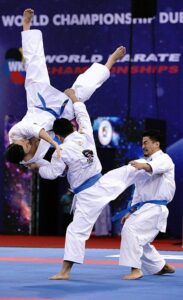
Ranking in Karate
Karate, like many other martial arts, has a ranking system that allows students to progress through the levels of proficiency. The ranking system typically involves colored belts that signify a student’s level of knowledge and skill.
In most traditional karate styles, the ranking system starts with a white belt, which is the beginner level, and progresses through a series of colored belts, including yellow, orange, green, blue, purple, brown, and black. Within each of these colors, there are usually a number of levels or degrees, which indicate increasing levels of proficiency.
The black belt is the highest rank in traditional karate, and it is usually divided into a series of degrees or dans. The first-degree black belt is usually considered the beginning of advanced study in karate, and as a student progresses through the higher degrees, they are expected to develop a deeper understanding of the art.
Ranking in karate is not just based on physical ability, but also on a student’s character, attitude, and commitment to the art. Students are expected to demonstrate not only technical proficiency but also a strong sense of discipline, respect, and humility. The ranking system serves as a motivator for students to continue their practice and strive for personal improvement.
Conclusion
Karate is a martial art that has been practiced for centuries and is still popular today. It is a great way to stay fit, learn self-defense, and develop discipline and respect. Karate is a great way to stay active and healthy, and it can be enjoyed by people of all ages and skill levels. With its many benefits, it is no wonder why Karate is still so popular today.
